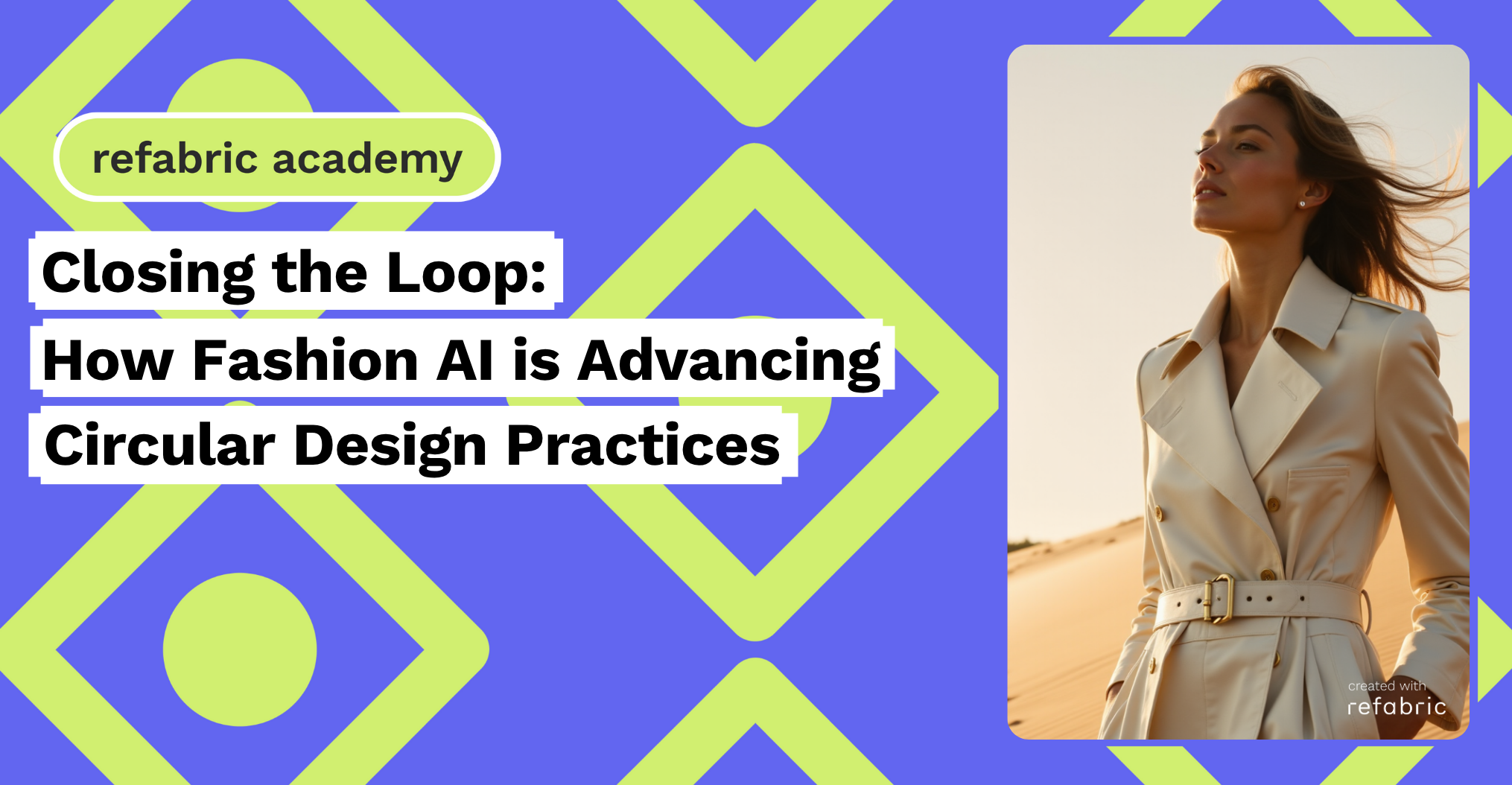Fashion AI is helping brands embrace circularity by enabling smarter design, sustainable production, and responsible consumption. As the fashion industry faces increasing pressure to reduce its environmental footprint, circular design has emerged as a critical solution. From minimizing waste to extending the lifecycle of garments, circular fashion encourages brands to rethink how clothes are designed, made, and reused. At the heart of this transformation, fashion AI is offering the tools and insights needed to build a more sustainable and regenerative fashion ecosystem.
What Is Circular Design in Fashion?
Circular design moves beyond the traditional take-make-dispose model by emphasizing reuse, repair, recycling, and longevity. It’s about creating garments that are not only beautiful and functional but also designed to return to the production cycle instead of ending up in landfills. For a system like this to succeed at scale, brands need data, agility, and precision—areas where fashion AI excels.
Smarter Design from the Start
Fashion AI empowers designers to make circular choices from the earliest stages of product development. By analyzing past collections, trend data, and customer behavior, AI can identify what styles are likely to perform well over time—helping brands avoid overproduction and short-lived trends.
AI-assisted platforms can also simulate how garments will age, degrade, or be disassembled, enabling designers to select materials and constructions that support recycling or repurposing. These intelligent insights reduce trial-and-error in the sampling process and help align product decisions with long-term sustainability goals.
Material Optimization and Waste Reduction
One of the biggest barriers to circularity is textile waste, and fashion AI is proving to be a game-changer here. AI-driven software can optimize fabric usage by calculating the most efficient pattern layouts, significantly minimizing off-cuts. When applied at scale, this kind of precision contributes to both cost savings and waste reduction.
Additionally, fashion AI can assist in sourcing low-impact materials by analyzing environmental data, durability, and supply chain availability. Designers can compare material options based on performance and recyclability, ensuring that sustainability isn’t an afterthought—it’s embedded in the process.
How Fashion AI Supports Inventory Intelligence for a Waste-Free Future
Overproduction is a long-standing issue in fashion, leading to excess stock and markdowns that often end up as landfill. Fashion AI provides predictive analytics that help brands align production with actual demand. By forecasting what customers will want, when they’ll want it, and in what quantities, AI makes just-in-time manufacturing more viable and less risky.
Some brands also use AI to manage reverse logistics, tracking returned or unsold products and identifying pathways for reuse—whether through resale, rental, or upcycling.
Empowering Consumers to Make Circular Choices
Circularity isn’t just about how clothes are made—it’s also about how they’re consumed. Fashion AI is increasingly used to build digital tools that empower consumers to make more responsible choices. For instance, AI-powered virtual try-ons reduce the likelihood of returns, while recommendation engines can steer users toward garments with longer lifespans, multi-functionality, or second-life options.
As circular fashion platforms grow, AI can personalize user experiences by offering repair tutorials, resale opportunities, and wardrobe analytics—making sustainable behavior more accessible and engaging.
Designing for Disassembly and Reuse
For fashion to truly go circular, garments must be easy to take apart and reintroduce into the system. Fashion AI helps designers test modular construction techniques and predict how different components can be separated and reused. This opens up new possibilities for customizable fashion, component recycling, and future-forward product design.
AI can even support the traceability of materials via digital IDs or blockchain integration, allowing garments to carry their history—what they’re made of, how they were produced, and how they should be recycled.
Closing the Loop with Intelligence
Fashion AI is not a silver bullet, but it’s a powerful tool in the industry’s transition toward circularity. By offering data-driven insights at every stage of the product lifecycle—from design to distribution to disposal—AI helps close the loop in a way that’s scalable, cost-effective, and creatively liberating.
For forward-thinking fashion brands, embracing circular design is no longer a niche effort—it’s an imperative. And with fashion AI as a partner, that future is not only possible, it’s already unfolding.
